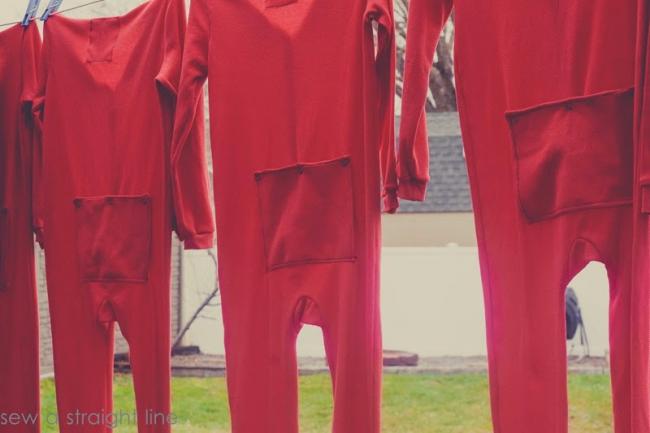Survival clothing beginner's guide

-
Comments (23)
-
Hermit - July 14, 2021
I saw Salomon footwear mentioned as a recommended option. I’ve still got a pair of Quest 4Ds that are going strong, but I blew through a pair of GTX mid boots and a pair of GTX low shoes unacceptably quickly when the uppers separated from the soles. I read that this was a common problem.
My experience was a couple years ago, though. I’d like to hear from anyone with more recent experience with Salmon products. Has quality/durability improved? I love the fit and comfort, but can’t shell out $150 every few months for something that falls apart.
-
Lowell - July 15, 2021
I’ve got the Salomon mid gtx’s and like em lots. I got my first pair I think 5+ years ago, and this past winter I noticed the waterproofing fading so I nikwaxed it up and now no problems. I also got a second pair, so that I can alternate (which in hoping extends longevity) and so I’d one pair does completely break down I still have a pair of boots on hand.
AFAIK, these are the most breathable waterproof shoes around, which is important to me as someone who is prone to sweating and lives in Seattle.
Oh, and one of the laces gave out recently too, so I replaced them with 550 paracord and I figure that’ll be more resilient.
-
-
July LewisContributor - July 18, 2021
For anyone on a budget discouraged by the price of high quality, durable clothing, look at second hand. I filled my bug out bag by shopping at the thrift store, and you can find items on thredUp. Note the brands recommended here and look for them!
-
Olly Wright - July 20, 2021
Thank you for the tip! That would be fun to spend a day at the thrift store and check out tags and see if you can score a nice wool coat or something for $4.
-
-
LadyKaos - July 20, 2021
good article, cheers 🙂 although I’m surprised no one mentioned linen
-
Olly Wright - July 20, 2021
I’ve heard linen is very absorbent, but so is cotton. Does linen also trap the moisture near your skin or wick it away? Linen is also supposed to be pretty durable.
I think they might not have been mentioned it solely because of how uncommon it is compared to cotton, wool, nylon, and polyester. I see those much more often than linen.
-
LadyKaos - July 20, 2021
Quote – “I’ve heard linen is very absorbent, but so is cotton. Does linen also trap the moisture near your skin or wick it away?”
Not nearly as badly, the phrase “cotton kills” is because it adsorbs water too well, retains that moisture and once it’s wet it looses almost all of it’s insulating properties, linen is much better at wicking away the moisture and can adsorb 20% of it’s weight in water before it feels damp (and before it’s heat retention properties start to fail) so I think it’s safe to say that linen doesn’t share the “cotton kills” problem
Quote – “Linen is also supposed to be pretty durable.”
Agreed, I swear by linen, and have done for more than five years, I can’t speak for commercially available linen clothing because I make most of mine myself, but under heavy use, linen pants last more than twice as long as standard store bought denim one’s of a similar thickness
Quote – “I think they might not have been mentioned it solely because of how uncommon it is compared to cotton, wool, nylon, and polyester. I see those much more often than linen.”
absolutely, linen is so hard to get, just because it’s manufacture is more costly than cotton, but in my mind it’s worth it
-
Olly Wright - July 20, 2021
Double the lifespan of denim! I’m definitely going to be looking into linen now. Good to hear it’s not as absorbent as cotton as well.
-
Brandon - August 10, 2021
Thanks Mr. Stokes for the insight.
I view linen and hemp as the natural version of nylon (or nylon as synthetic linen) 50/50 +/- 10/10 cotton/linen or cotton/hemp has decent moisture performance (much better than straight cotton), great abrasion strength, comfortable unlike 100% nylon, and does not contribute microplastics to the water supply. Best of all, they are lightweight and breathable blends allowing for ease of motion in a tough but thin outer shell under which you can later your thin wool baselayer to handle moisture and just-in-car insulation / smell resistance. Thin, purposeful layers work in warmer conditions than you could otherwise layer clothing in.
Wool and Prince, Icebreaker, Ortovox, Taylor Stitch, Huckberry, Edgevale, Patagonia, Outdoor Research, Orvis, Kuhl, Kuiu
And yes Best Made is mostly lame, but I have two pairs of the Duluth Trading Best Made 60/40 cotton/linen 5 pocket pants (hard to find) that are very nice, though not as bulletproof as I would like.
-
Brandon - August 10, 2021
Also sounds a little strange, but it’s good to think about what you wear to sleep. Are you ready to wake up and immediately grab your loved ones and run out of your house, or will you be fumbling for clothing? Dress warm enough to not need blankets and you’ll fair better outside than in your skivvies.
-
Olly Wright - August 11, 2021
How about sleeping in this underwear with your optional butt flap? That’ll startle the neighbors when you run out of your house during a house fire.
Good point about sleeping in clothes you can quickly evac with or have them staged and ready to throw on if necessary.
-
-
M. E.Contributor - July 31, 2021
I would like to give a shoutout to both silk and cashmere. It may sound “froo froo” but silk long underwear is incredibly lightweight, moisture wicking, dries quickly, and is a great base layer. Like many people I am allergic to wool but wool comes from sheep and cashmere comes from goats and apparently that matters to whatever it is in my immune system that reacts to wool; I have no reaction to cashmere. Cashmere has terrible abrasion resistance but is very warm and has all of the other benefits of wool, like staying warm even when wet and great odor control. I often travel to very cold climates and a four-part layer of silk base layer, cashmere sweater, down jacket (the higher down percentage, the better), and rain poncho is the perfect combination. (I prefer ponchos because they are so versatile – you can even use them as a tarp if needed – but admittedly rain jackets are easier to move around in).
If you live in an area prone to clothing moths, store the cashmere (and wool if you wear it) in the freezer or you’ll have holes all over your clothes.
Unfortunately neither silk nor cashmere socks are worth much – they simply do not hold up in the heel or toe area – so I have to use a cotton/poly blend since I can’t wear wool. I find layering a very thin pair with a normal thickness pair is a great way to prevent blisters. (I tried wearing poly socks next to my skin with wool over them and ended up with little red blisters all over my feet! Not great in a survival situation!).
-
Alisa Felix - July 31, 2021
Those are some good suggestions for those allergic to wool. I’m personally not a big fan of the raw wool as it’s pretty itchy but am starting to get into merino wool. Are you allergic to that kind as well M. E.?
-
M. E.Contributor - July 31, 2021
I cannot wear wool of any kind. Believe me I have tried! I even had a relative who tried to trick me once, thinking the “no wool” thing was all in my head, and went to the trouble of giving me socks which they swore were a poly blend when they were, in fact, wool. I ended up with a severe rash all over my feet in the middle of a hiking trip in the wilds. THANKS, relative! FWIW I cannot wear acrylic either; I have no idea why. I think this is just another argument in favor of the point made in the article, which is that your “prepper” clothes should really just be your regular clothes. The time to find out you can’t wear something is when you have time to substitute something else. Silk/cashmere blends tend to have the best weight-to-warmth ratio in my opinion. Pricey but worth it.
-
Alisa Felix - August 1, 2021
That’s so sad that your relative tricked you.
-
Brandon - August 10, 2021
Try alpaca wool. All the qualities that make merino great, alpaca does each better, and no lanolin which is what most wool allergies are from. Appalachian Gear Company and Arms of Andes manufacture outdoor alpaca gear. No nylon blends though.
-
-
A2 - August 5, 2021
I buy a lot of outerwear from high end brands like Patagonia, on Poshmark, which is a website featuring used and NWT (new with tags) clothing. For instance, got my winter go bag down jacket there, made by Skea (a ski brand), for $25.
-
Captain Peanut - August 6, 2021
Looking into Poshmark a little, it looks like an ebay of name brand clothes is that right? People list and sell their name brand items?
-
A2 - August 6, 2021
Sorta? Lots of non-name brands, too. But I go there to search for pricey brands like Patagonia that are built really well so I can buy them at discount.
-
-
matthew.Contributor - August 5, 2021
I’d like to suggest Duluth Trading Company be added to the list of good options for work and/or heritage wear. They also have excellent options for women, which some of the other brands mention fail miserably at.
-
Scout - August 11, 2021
Campmor.com is another good source for deals on name-brand outdoor gear; they have been my first stop for backpacking/hiking gear for years.
REI now has a Used Gear section on their website. In addition to buying second-hand, you can also trade in your old gear when you are ready for an upgrade.
-
Captain Peanut - August 14, 2021
I didn’t know REI had a used section, or that I could trade in my old gear. I will be checking that out!
-
-
Gideon ParkerStaff - October 29, 2021
Minus33 is a 100% merino wool clothing company with many men and women clothing options. They have beanies, socks, leggings, underwear, gloves, shirts, jackets, and more.
-
